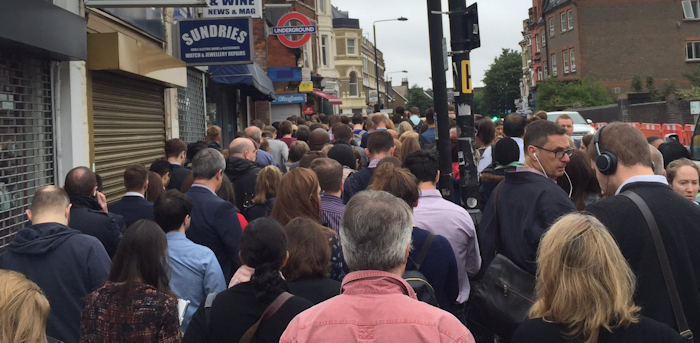It’s always exciting when a new business opens in West Hampstead and recently there seems to have been a shift up-market, with the arrival of Gail’s, M&S and Lola’s. The latest business to open is the new restaurant Hām, with a soft launch this weekend offering brunch at lunch and dinner in the evening. Our resident food critic Tom will be going for dinner in March so watch out for that, but I went for brunch this weekend.
And who better to go with than Jennie and Tom, formerly of that West Hampstead stalwart, the Kitchen Table. They know a thing or two about brunch. So, I rocked up at Hām on Sunday to meet them and a couple of friends.

The first thing you notice about the place is that has undergone a serious renovation, the new Hām is very ‘now’, from the tone of the walls and furniture, to the shape of the lights, but in a good way. It was full of friends and family of the owners and there was a nice buzz to the atmosphere.
The chefs working in the kitchen are visible, although the clever use of mirrors not only brings more light to the back of the room it makes the kitchen seem to float in a different plane.
The chef, Matt Osborne (an Aussie) was formerly at the Ledbury (amongst other venues). The food is creeping into fine dining territory for brunch and I expect for dinner. I ordered the Hām breakfast (£13) a full English but with a twist: added avocado and kasundi (it’s oven dried tomato paste with a kick of chilli). It was good, a chef-cooked full English with the quality ingredients shining through. For me (and Tom who also ordered it), quality or not, we would have appreciated an extra rasher of bacon.

Jody ordered avocado on toast with goats cheese (and kasundi), but not enough goats cheese in her opinion. Jennie went for the mushrooms (and Doddington cheese) on toast, which looked delicious, and she also sensibly ordered some crumpets with honey, ricotta and pear to share. It was brunch after all, which should be a relaxed sharing type meal, so I ordered them as well. And they were a nice sweet complement to my full, but fine, English.

Tom, Jody and I wondered if the sourdough toast was a bit difficult to cut, but we were put in our place by Jennie who thought that it was the crunch of the crust was what made it.
For drinks the menu offered green (apple, celery, spinach) and red (apple, carrot and beetroot) juices plus fine teas and coffee which met the high standard of the ex-Kitchen Tablers (and coffee drinkers) around the table.
While chatting to Rose and David, the new owners, Jennie advised ‘listen to Twitter and Instagram’ because West Hampstead will let you know how it feels. And if this tweet is anything to go by, Hām is off to a positive start. I’d agree – I had an enjoyable and importantly delicious brunch. Hām is a step up the fine dining and price ladder from other local options, but as we have seen with the arrival of Gail’s and then Lola’s if you offer a quality atmosphere and food, people will come – and pay.
Once it fully opens on 28th it will offer brunch and a set lunch menu, with à la carte in the evenings.





